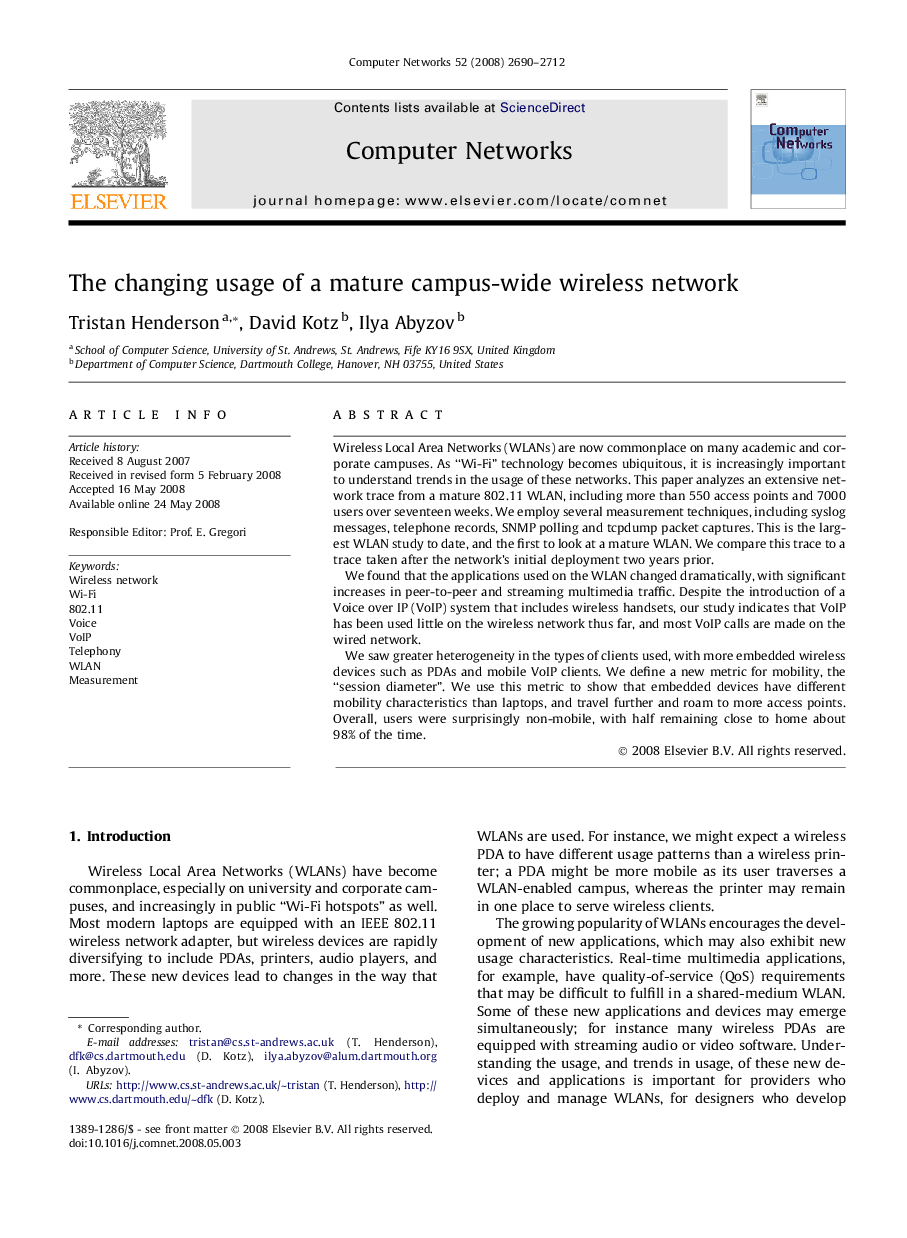| Article ID | Journal | Published Year | Pages | File Type |
|---|---|---|---|---|
| 452562 | Computer Networks | 2008 | 23 Pages |
Wireless Local Area Networks (WLANs) are now commonplace on many academic and corporate campuses. As “Wi-Fi” technology becomes ubiquitous, it is increasingly important to understand trends in the usage of these networks. This paper analyzes an extensive network trace from a mature 802.11 WLAN, including more than 550 access points and 7000 users over seventeen weeks. We employ several measurement techniques, including syslog messages, telephone records, SNMP polling and tcpdump packet captures. This is the largest WLAN study to date, and the first to look at a mature WLAN. We compare this trace to a trace taken after the network’s initial deployment two years prior.We found that the applications used on the WLAN changed dramatically, with significant increases in peer-to-peer and streaming multimedia traffic. Despite the introduction of a Voice over IP (VoIP) system that includes wireless handsets, our study indicates that VoIP has been used little on the wireless network thus far, and most VoIP calls are made on the wired network.We saw greater heterogeneity in the types of clients used, with more embedded wireless devices such as PDAs and mobile VoIP clients. We define a new metric for mobility, the “session diameter”. We use this metric to show that embedded devices have different mobility characteristics than laptops, and travel further and roam to more access points. Overall, users were surprisingly non-mobile, with half remaining close to home about 98% of the time.
